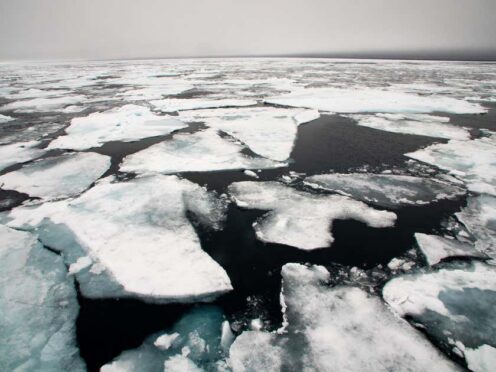The Arctic could see its first “ice-free” summer days, with very little sea ice cover, in the next few years, researchers have said.
Arctic ice melts over the summer months, reducing the area of frozen ocean, and then increases again over the winter months.
But ice cover has been declining as a result of global warming, and predictions have been made as to when the Arctic Ocean could be “ice-free” in September, when it reaches its minimum extent at the end of the summer.
Ice-free does not mean there would be no ice, but is defined by scientists as one with less than one million square kilometres of ice cover, just 20% of what the average minimum cover was in the 1980s.
Such conditions would have a host of impacts from increasing warming by reducing the heat-reflecting capacity of the white ice, and coastal erosion, to putting pressure on wildlife such as polar bears, causing new fish species to move into the Arctic Ocean and increasing human activity such as shipping.
The study, from the University of Colorado Boulder in the US, analysed existing literature on sea ice projections and sea ice coverage data from climate models to see how the Arctic might change daily in the future.
The study published in the journal Nature Reviews Earth and Environment said the earliest ice-free September could occur in the 2020s to 2030s, under all scenarios for the amount of greenhouse gases humans put into the atmosphere, and is likely going to occur by 2050.
The researchers said all previous predictions for an ice-free Arctic focus on the monthly average conditions for September, but their analysis shows it could happen on a daily basis, rather than for the month as a whole, years earlier.
Alexandra Jahn, associate professor of atmospheric and oceanic sciences and fellow at CU Boulder, said: “When it comes to communicating what scientists expect to happen in the Arctic, it is important to predict when we might observe the first ice-free conditions in the Arctic, which will show up in the daily satellite data.”
The researchers found the first occurrence of daily ice-free conditions is expected on average four years earlier than for the month of September as a whole, and could happen 10 years or more earlier.
That means ice-free conditions in daily satellite observations could occur even earlier than in the monthly models, and potentially in the 2020s, the study said.
The study also said the Arctic could be frequently ice-free in September between 2035-2067 under scenarios with high greenhouse gas emissions, with a small delay possible for lower emissions scenarios.
Under an intermediate emissions scenario, a path the world is currently on, the Arctic might become ice-free only from August to October, but under the highest level of emissions it could see minimal ice conditions for up to nine months a year by late this century.
But Arctic sea ice could return quickly if temperatures cool down, the scientists said.
Prof Jahn said: “Unlike the ice sheet in Greenland that took thousands of years to build, even if we melt all the Arctic sea ice, if we can then figure out how to take CO2 back out of the atmosphere in the future to reverse warming, sea ice will come back within a decade.”
